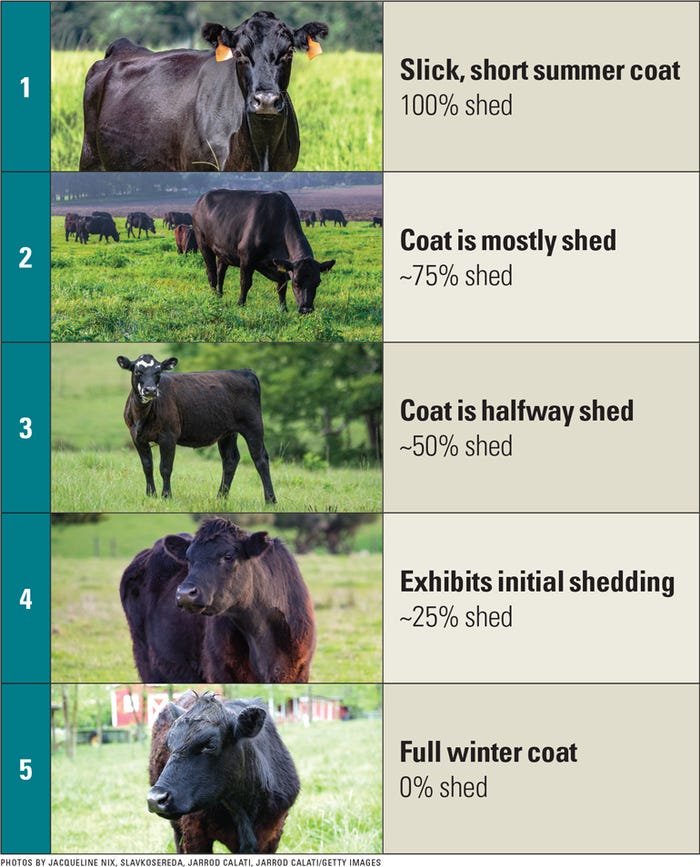Assess hair loss in beef cattle
Shedding helps cattle tolerate the summer heat.

How much hair a cow has may affect performance. For beef cattle, losing hair is crucial to dealing with summer heat stress.
Eldon Cole, University of Missouri Extension livestock specialist, says farmers need to pay attention to “shaggy cows” as they tend to struggle to gain weight in hot, humid temperatures.
“Mid-April to mid-June is the ideal time to evaluate your cow herd’s hair shedding ability,” Cole says in a recent news release. “This may seem to be a silly thing to do, but hair shedding is a moderately heritable trait.”
Researchers at the University of Missouri, with help from researchers at Mississippi State and North Carolina State, have been tracking the time of shedding and its effect on animal performance. Since 2011, they found the rate of shedding plays a substantial role in cattle’s tolerance to heat, Cole explains.
An animal’s hair retention is so important that the American Angus Association is interested in developing expected progeny difference (EPD) values, he adds.
Rate your cow’s hair loss
According to the MU guide, cattle shed hair from front to back and from topline to belly, but some animals vary this pattern. One of the last spots cattle shed is the lower quarter above its hock and its underline.
A popular hair scoring system uses a value of 1 to 5. Here is a quick visual assessment guide for beef farmers based on information from MU Extension Guide “Hair Shedding: A tool to select heat tolerant cattle.”

In order to get a consistent hair rating, Cole offers a few tips to scoring:
Use only one or two scorers.
Score cattle within a seven-day time frame.
Score only yearlings or older cattle
Take notes on each pasture and age of cattle scored to compare animal’s sire and calving dates.
Shedding data collection
Hair shedding scores can be determined as cattle pass through the chute or when they are out on pasture. Farmers do not need to restrain cattle for scoring.
The guide recommends maintaining lists of which cattle are in which pastures and using data recording sheets when collecting shedding information. And it is fast. MU says the rate of scoring averages is one cow per minute.
Another time to collect hair shedding score data is during routine cattle handling.
About the Author(s)
You May Also Like




.png?width=300&auto=webp&quality=80&disable=upscale)
